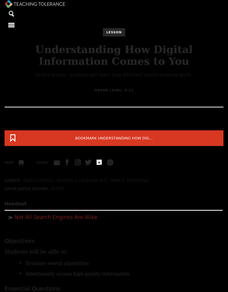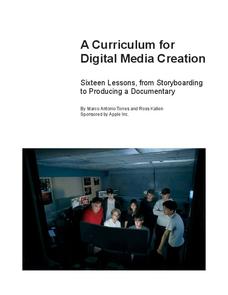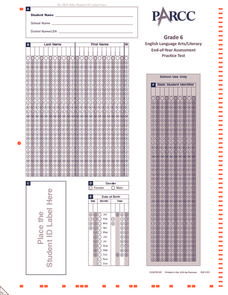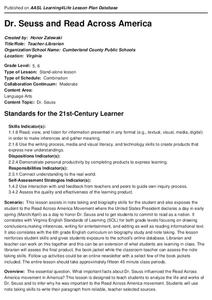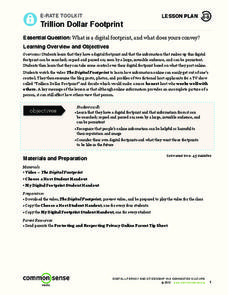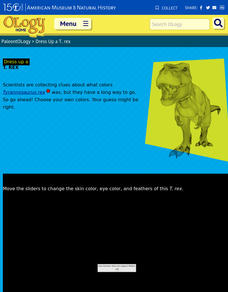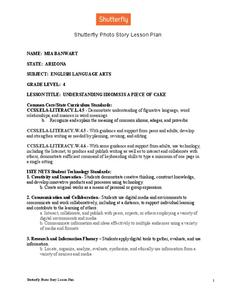Teaching Tolerance
Understanding How Digital Information Comes to You
Google, Yahoo!, Bing ... so many choices, so little time! Using the resource, scholars explore how different search engines affect the way they find information. After reading a handout on the topic and engaging in small group...
Apple
A Curriculum for Digital Media Creation
Consumer technology has made it possible for filmmakers to create entire movies from the comfort of their home computer. Guide high school film buffs through the process of designing a documentary with an extensive unit published by...
Federal Reserve Bank
Financial Literacy Infographic Scavenger Hunt
A lesson in personal finance can be the most valuable part of a high school education. Connect the basics of banking with informational reading skills in a lesson that prompts teenagers to answer a series of questions based on...
Open Oregon Educational Resources
Digital Foundations: Introduction to Media Design with the Adobe Creative Cloud, Revised Edition
How can Adobe Creative Cloud enhance digital art and media design? Readers explore just that with the Digital Foundations eBook. They learn how to source images and how to create symmetry and asymmetry in their digital designs. They also...
Teaching Tolerance
Social Media for Social Action
Engage in activism, not slacktivism! Scholars discuss social media and the Internet as tools for social change. Next, they engage in a close reading strategy called Thinking Notes as they read an article about social media activism.
EngageNY
Gathering Information about Screen Time: Assessing and Reading Internet Sources, Day 1
What's the best way to evaluate a source's accuracy and credibility? Pupils discuss the question with a partner and then share their ideas with the class. They also conduct Internet research, looking for an article that answers a chosen...
Southern Poverty Law Center
Evaluating Reliable Sources
A lesson plan instills the importance of locating reliable sources. Scholars are challenged to locate digital sources, analyze their reliability, search for any bias, and identify frequently found problems that make a source unusable.
Common Sense Media
Oversharing: Think Before You Post
Could your learners use a little more discretion when they post online? Take a look at these ten rules of posting etiquette, which prompts them to be smart about what photos and information they share on the Internet.
Curated OER
End-of-Year Practice Test (Grade 6 ELA/Literacy)
With the end of the year quickly approaching it's time to find out exactly how much your sixth graders have learned. Specifically designed for the Common Core ELA standards, this practice test gives students five reading passages,...
Google
Online Safety Roadshow Activity
What does it mean to have digital citizenship? A set of lessons teach middle schoolers how to be safe and productive online. From sharing posts to creating secure passwords, learners discuss the importance of remaining diligent—and...
Southern Poverty Law Center
Analyzing How Words Communicate Bias
Words are powerful ... can your class choose them wisely? Scholars evaluate news articles to discover the concepts of tone, charge, and bias during a media literacy instructional activity. The resource focuses on recognizing implicit...
Curated OER
Dr. Seuss and Read Across America
What important facts about Dr. Seuss influenced the Read Across America movement...? This is the driving question of a research project that requires scholars to find information about Dr. Seuss' life and work. Class...
Common Sense Media
Trillion Dollar Footprint
Learners explore their digital footprints, and discover how information they put online can easily be searched, copied, forwarded, and seen by a large audience.
Common Sense Media
Talking Safely Online
What is the difference between online and real-life friendships? Pupils learn how to keep information private online and maintain their safety in various situations requiring online communication.
College Board
2011 AP® Computer Science A Free-Response Questions
Was computer science any different back then? Scholars peruse the free-response questions from the 2011 AP Computer Science A. By practicing questions related to representing digital sounds as an array of integer values and writing...
American Museum of Natural History
Dress up a T. Rex
Scholars play with an image's color and brightness to predict how tyrannosaurus rex's skin, feathers, and eyes would have appeared. Information and real-world pictures shed light on what evidence guides our assumption of how a...
Shutterfly
Photo Story Lesson Plan
After reading Loree Leedy's There's a Frog in My Throat: 440 Animal Sayings a Little Bird Told Me, kids create and illustrate their own poems that convey the meaning of an idiom. The poems are then transferred into Shutterfly's Photo...
C-SPAN
Polling and Public Opinion
Most people are eager to offer their opinions about topics of interest, but what's the most effective way to collect and assess these opinions as a matter of fact? High schoolers learn about the history of polling, as well as the...
Walters Art Museum
The Symbolism of Allegorical Art
Introduce learners to allegorical art with four bronze sculptures by Francesco Bertos. After modeling how to recognize bias and allegory in Bertos' Africa, class groups examine the other three sculptures in the series before creating...
Media Smarts
Media Awareness Network: Privacy Pirates
Sail away on the open seas in order to protect your online privacy from the privacy pirates. This animated game helps students become responsible digital citizens as they learn how to keep their personal information secure.
PBS
Pbs Learning Media: Molly of Denali: Sled Dog Dash Game
Use this Molly of Denali digital game to extend and expand children's use of informational text, as well as their knowledge of Alaska Native culture. Molly and her friend Tooey use a fictional app to access information that will help...
PBS
Pbs Learning Media: Molly of Denali: Fish Camp Game
Use this Molly of Denali digital game to extend and expand students' use of informational text as well as their knowledge of Alaska Native culture.
PBS
Pbs Learning Media: Molly of Denali: Beading Art Game
Use this Molly of Denali digital game to extend and expand students' use of informational text, as well as their knowledge of Alaska Native culture. In this game, Molly shows players how to make various beading designs using the...
Open Ed
Open Ed: Assessment: Digital Transmission and Storage of Information
This four-question assessment over digital transmission and storage of information has a resources accompanying each question. The resources include 5 videos and a diagram. Students study the resources and then take the assessment.


